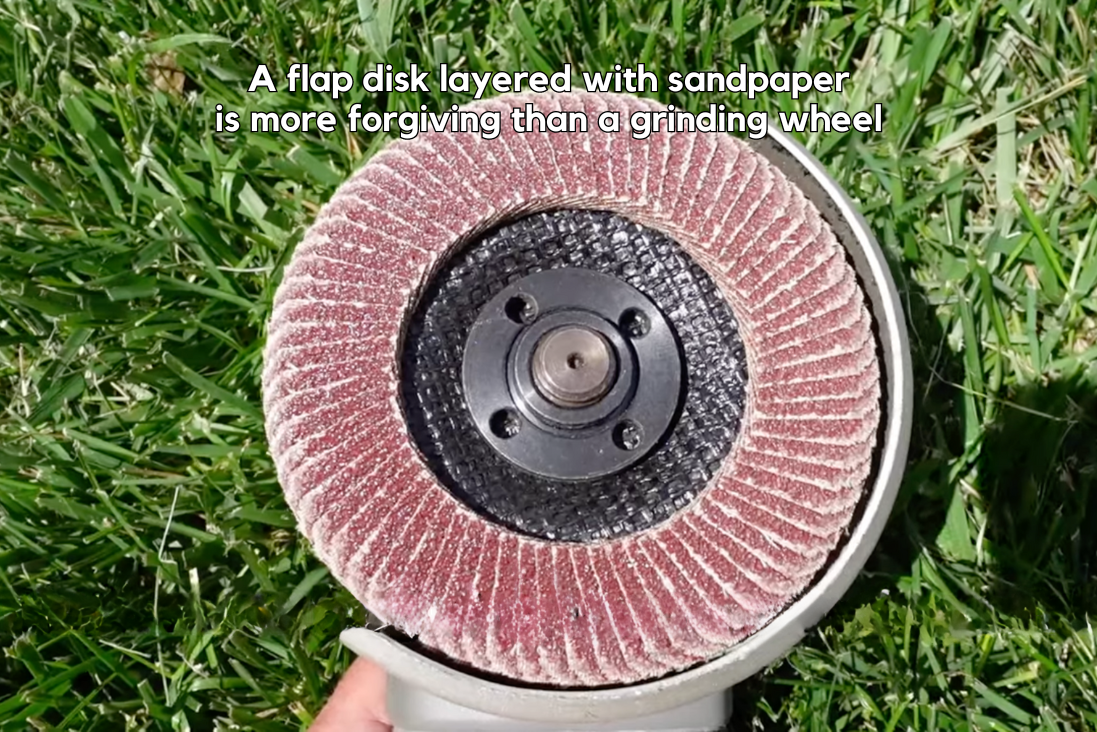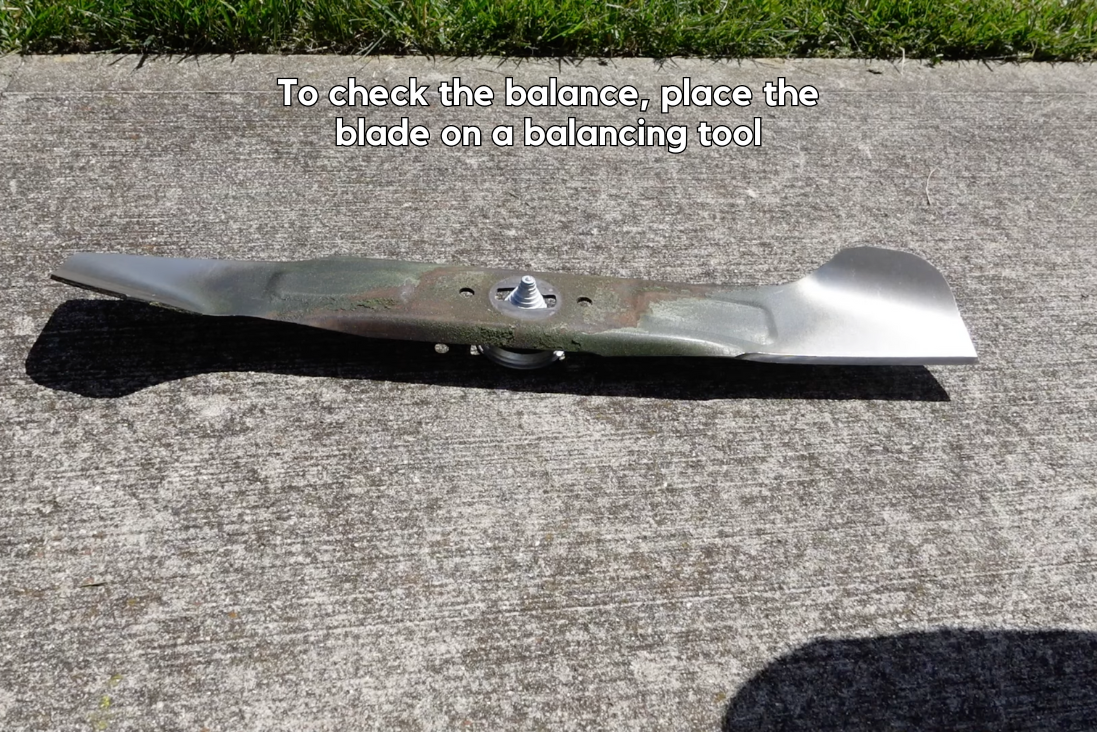How to Sharpen Lawn Mower Blades

Image credit: Fix it Flip
Lawn care might not always be at the top of our weekend fun list, but there’s something deeply satisfying about seeing a neatly trimmed yard. A well-maintained lawn doesn’t just happen by itself—it requires a bit of TLC, and one of the most important aspects of that care involves keeping your lawn mower blades sharp. Blunt blades tear through grass, leading to ragged edges and a brown, unhealthy-looking lawn. But learning how to sharpen lawn mower blades takes a little bit of practice.
I remember my first go at lawn mowing, when I naively thought my mower could handle anything I threw at it. The realization that the mower blade was more crucial than I’d assumed came after a few attempts at cutting, only to be left with a patchy, uneven mess. If you’ve ever found yourself wondering why your lawn doesn’t have that professional cut look, it might just be the dull blades at fault. Here, we’re going to explore how to properly sharpen your lawn mower blades, why it’s necessary, and how to avoid common pitfalls in the process.
Related: Your Complete Guide to Summer Lawn Care
Why Sharp Blades Matter
Let’s start by understanding why sharp blades are crucial. When mower blades are sharp, they cut grass cleanly, resulting in a healthier lawn. A clean cut allows the grass to heal quickly and reduces the risk of disease, pests, and browning. Conversely, dull blades tear and rip the grass, causing jagged edges that make your lawn susceptible to all sorts of issues. This can ultimately lead to an uneven appearance and potentially damage the grass root, which isn’t what you want after all that effort.
The frequency of blade sharpening depends on several factors: how often you mow, the size of your lawn, and the type of grass you have. As a general rule, sharpening your blades every 20 to 25 hours of mowing is a good practice. For many, this translates to twice a mowing season. But if you’re noticing your lawn isn’t looking its best, it might be time for a touch-up even sooner.
How to Sharpen Lawn Mower Blades
Before you dive into sharpening, it’s essential to set the stage for safety. Working with mower blades can be dangerous if not handled properly, so make sure you have all necessary precautions in place. First and foremost, disconnect the spark plug. This is a vital step as it prevents the mower from starting accidentally while you’re working on it. Trust me, you don’t want to skip this.

Once you’re in the clear, gather the tools you’ll need. A pair of heavy-duty gloves, safety glasses, a socket wrench, and a file or angle grinder with a flap disc are essentials. The gloves protect your hands from sharp edges, and the glasses shield your eyes from any debris. A workbench with a vice can be incredibly helpful to hold the blade steady, but it’s not mandatory if you can stabilize the blade effectively on a flat surface.
Remove the Blade
With everything set, it’s time to remove the blade from the mower. This step can vary depending on whether you have a push mower or a riding mower, but the basic principles remain the same. Use a socket wrench to loosen the bolt holding the blade in place. If the bolt is stubborn, applying a bit of penetrating oil can make the job easier. Remember to note which side of the blade faces the grass so you can reinstall it correctly.
Laying the mower on its side provides better access to the blade, but be mindful to lay it with the carburetor side up to prevent oil leaks. This simple precaution can save you a headache later when your mower is ready to roar back to life.

The Sharpening Process
Now that you have the blade free, it’s time to get down to the sharpening itself. If you’re using a file, place the blade in a vice to hold it steady. Align the file with the existing bevel of the blade and apply consistent pressure, moving the file in one direction along the edge. This method takes some elbow grease but offers precise control over the sharpening process.

For a quicker method, consider using an angle grinder with a flap disc. This tool is particularly useful for removing a lot of material quickly and is forgiving enough for beginners. Hold the grinder at the same angle as the blade’s bevel and move it back and forth along the edge. The goal is to maintain the original angle to keep the blade balanced. Uneven grinding can lead to imbalance, which causes vibrations when mowing and can damage the mower.
As you sharpen, aim for a sharp edge that’s not too thin and fragile. A razor-thin edge might seem appealing but is more likely to become dull quickly or even chip when it hits hard objects like rocks or roots.

Balance the Blade
Once you’ve achieved a nice, sharp edge, the next step is to check the blade’s balance. A balanced blade ensures a smooth cut and prevents unnecessary strain on the mower’s engine. Imbalance leads to excessive vibration, which not only affects the cut quality but can also damage the mower over time.
To check the balance, place the blade on a balancing tool or a simple nail driven into a wall. If one side dips lower than the other, it’s heavier, indicating you need to remove a bit more material from that side. A balanced blade will rest level, ensuring it spins evenly during operation.

Reinstall the Blade
With the blade sharpened and balanced, you’re ready to reattach it to the mower. Ensure it’s positioned with the cutting edge facing the right direction—double-check your earlier notes if needed. Secure it tightly with the bolt using your socket wrench. It’s vital to tighten it enough so it doesn’t come loose during mowing, but not so tight that you strip the threads or make it impossible to remove next time.
Reconnect the spark plug, and you’re set to go. A quick test run over a small patch of grass will reveal the fruits of your labor. If the mower sounds smooth and the grass looks even, you’ve done a great job.
Maintenance Tips and Common Mistakes
Maintaining your mower blades doesn’t end with sharpening. Regular checks and cleanings are necessary to extend the life of the blades and your mower. After each mow, take a moment to clean off any grass or debris stuck to the underside of the mower and blades. This not only helps keep the blade sharp longer but also prevents rust from developing.
Avoid mowing over sticks, rocks, or other debris that can nick and dull your blade. This might seem obvious, but a careful once-over of your lawn before mowing can save your blades a lot of wear and tear. If you mow frequently, consider having a spare set of blades. This way, you can swap them out as needed and keep your mower running without delay.
One common mistake is over-sharpening. While a sharp blade is crucial, over-sharpening can weaken the edge, leading to chipping or cracking. Stick to a regular schedule, and don’t be afraid to reach out to professionals if you’re unsure about the process. Many garden centers offer blade sharpening services for those who prefer to leave it to the experts.
Lastly, remember that even the best blades don’t last forever. If you notice your blade has large chips, cracks, or signs of significant wear, it might be time for a replacement. Investing in quality blades will ensure your mower continues to perform optimally, giving you a lawn that’s the envy of the neighborhood.